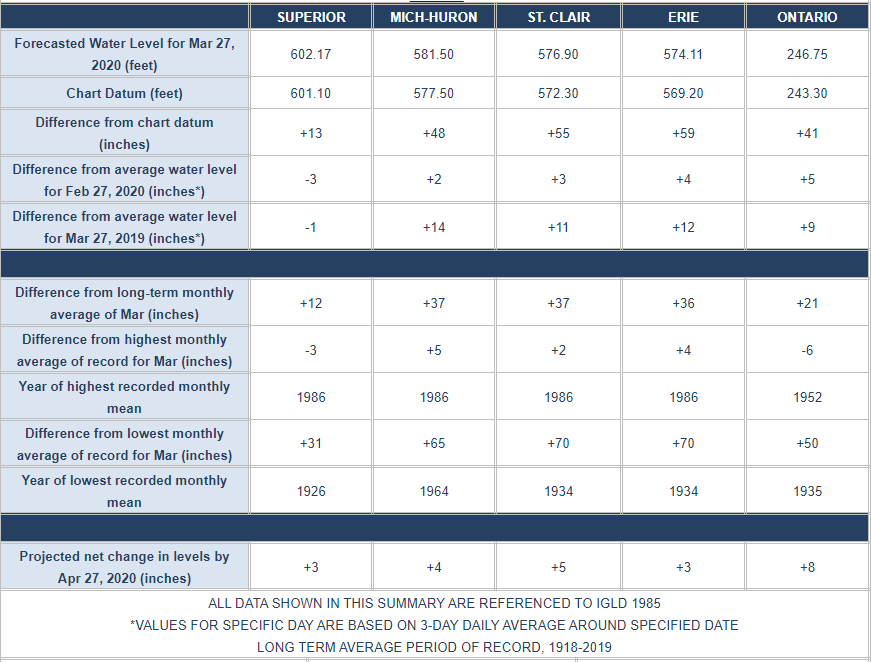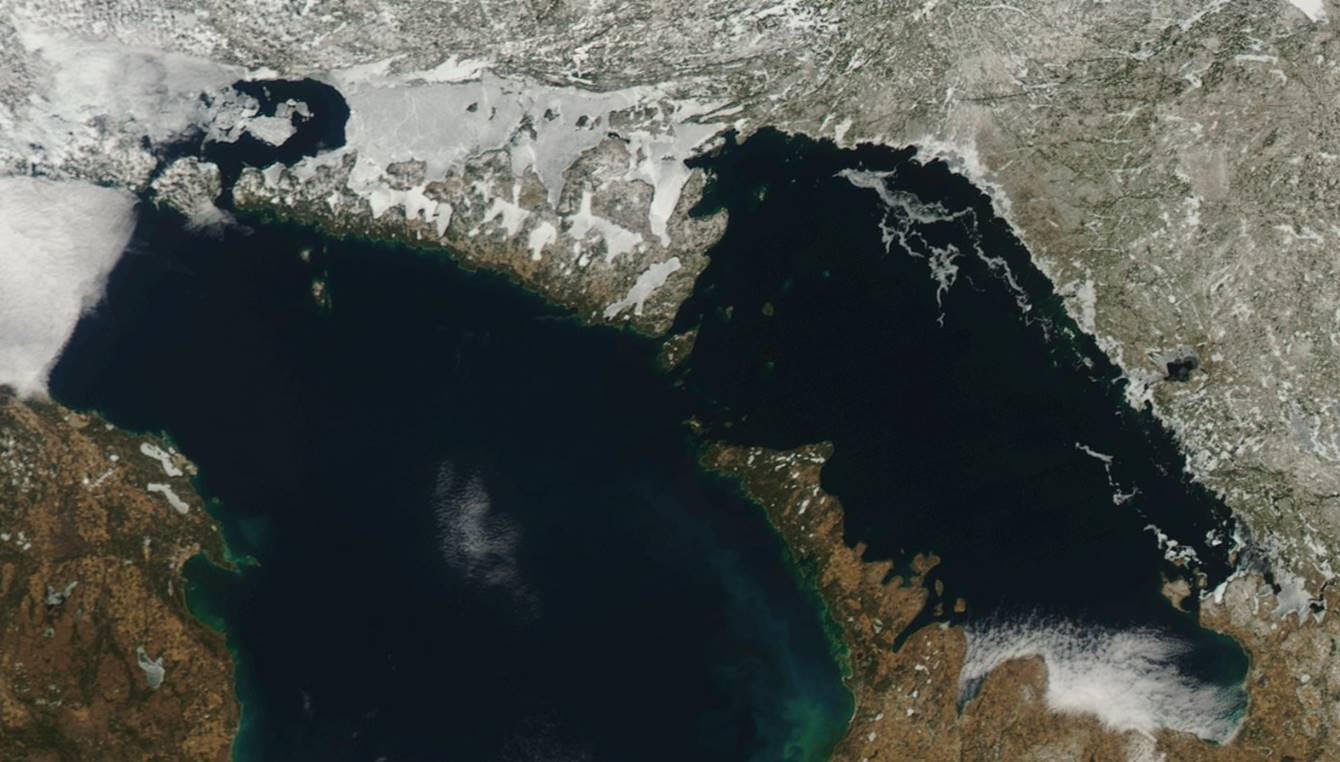2020-Mar-30
March 29 Water Levels Report
Water levels continue to be well above average and near or above record high levels.
From a month ago the water level on Lakes Superior is down by 3 inches, and Lakes Michigan-Huron, St Clair, Erie & Ontario are up 2, 3, 4 & 5 inches respectively. Lakes Superior is down 1 inch from this time last year, and Lakes Michigan-Huron, St. Clair, Erie & Ontario are 14, 11, 12 & 9 inches higher respectively than they were at this time last year, and 12, 37, 37, 36 & 21 inches, respectively, above their long term March average. Lakes Michigan-Huron, St. Clair and Erie are 5, 2 & 4 inches higher, respectively, than their previous record highs for March.
In a month’s time, the level of Lakes Superior, Michigan Huron, St. Clair, Erie & Ontario are expected to rise by 3, 4, 5, 3 & 8 inches respectively. This rise in lake levels is expected during spring months when typically increased rainfall and snowmelt occurs.
Outflows from Lake Superior into the St. Mary’s River and Lake Michigan-Huron’s outflow into the St. Clair River are predicted to be above average for this month. Lake St. Clair’s outflow through the Detroit River and Lake Erie’s outflow through the Niagara River are also forecasted to be above average in this month. In addition, Lake Ontario’s outflow through the St. Lawrence River is projected to be above average for this month.
High water levels and potentially record high water levels are expected to persist for at least the next six months, so flood prone areas are expected to remain vulnerable. Water levels and flows in the connecting channels can be significantly impacted by ice during the winter months.



The satellite image below from March 17 shows that there is still ice cover over most of the North Channel, but the remaining shoreline ice in Georgian Bay continues to diminish.

